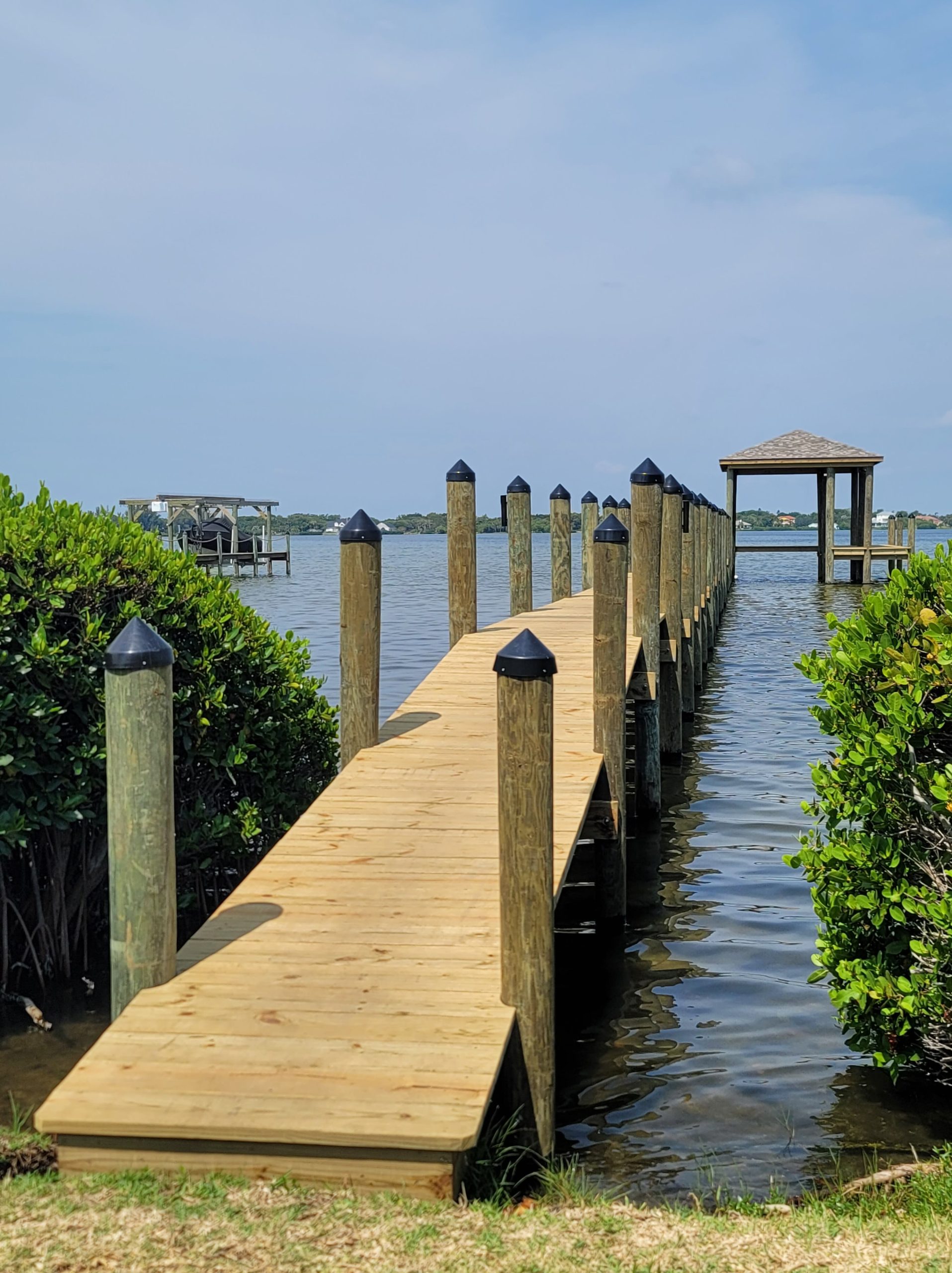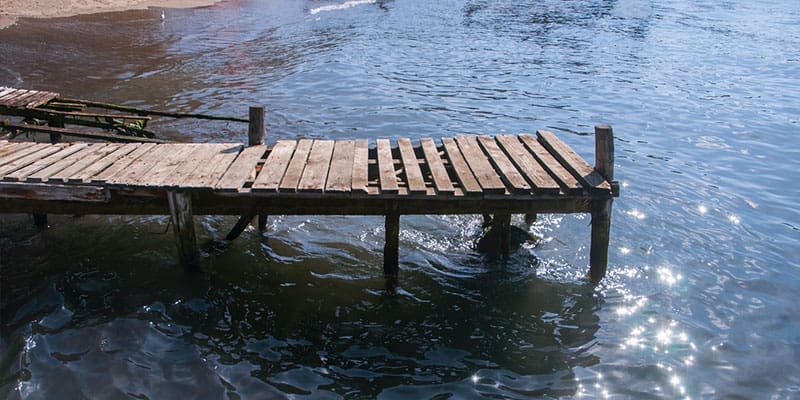Typical Concerns That Cause Costly Dock Repairs
Typical Concerns That Cause Costly Dock Repairs
Blog Article
Reliable Dock Repair Work Techniques: Making Sure Architectural Stability
Ensuring the structural honesty of anchors via effective repair techniques is vital for the durability and security of aquatic centers. This involves a multi-faceted method beginning with thorough assessments utilizing sophisticated innovations like sonar devices and from another location ran vehicles (ROVs) to detect both visible and hid damages. Consequently, choosing the right fixing products, such as composite materials and corrosion-resistant alloys, is essential for durability. Structural reinforcement approaches, including the implementation of cross-bracing systems and load-distribution plates, play a crucial role in mitigating anxiety points. However, the relevance of these strategies comes to be noticeable when discovering advanced repair work methods and preventative upkeep strategies.
Examining Dock Damages
Analyzing dock damages is a critical very first step in guaranteeing the structural honesty and safety and security of any docking center. Key facets to analyze include the dock's foundation, pilings, decking, and hardware (Dock Repairs).
Structural engineers or certified inspectors generally do these assessments utilizing specialized tools and techniques. Undersea evaluations may employ finder equipment or from another location ran vehicles (ROVs) to discover immersed damage. Above water, aesthetic inspections are enhanced by utilizing dampness meters and other diagnostic devices to uncover underlying issues not right away noticeable to the naked eye.

Choosing Repair Service Products
Picking the ideal fixing products is an essential step in the dock restoration process, one that directly affects the longevity and performance of the fixed framework. Material choice need to be driven by aspects such as ecological conditions, load-bearing demands, and compatibility with existing dock parts. Timber is a conventional option for docks due to its natural durability and visual allure. However, picking the best sort of wood, such as pressure-treated lumber or naturally rot-resistant species like cedar or teak wood, is critical to withstand marine atmospheres.
Along with timber, composite materials are increasingly prominent as a result of their toughness and low maintenance needs. Composites, normally made from a mix of plastic and wood fibers, provide excellent resistance to rot, pests, and UV damage. For steel anchors, choosing corrosion-resistant alloys such as galvanized steel or marine-grade light weight aluminum is important to protect against corrosion and make certain architectural integrity in saline water problems.
Epoxy materials and marine-grade sealants are indispensable for repairing cracks and securing joints, providing a waterproof obstacle and boosting the dock's overall toughness. By diligently picking top notch materials, dock repair work can accomplish resilient results, therefore safeguarding against future degradation and guaranteeing secure, dependable use.
Structural Reinforcement Strategies
Efficient architectural support methods are crucial in ensuring the security and durability of dock fixings. One essential approach involves the usage of steel or composite reinforcement bars (rebar) within concrete structures. Rebar supplies added tensile strength, stopping splits and distributing tons extra equally. This approach is specifically efficient for docks get more exposed to heavy tons or rough ecological problems.
One more vital strategy is the application of click for info fiber-reinforced polymers (FRP) These products use high strength-to-weight ratios and superb resistance to deterioration, making them excellent for enhancing wood or concrete anchors. FRP can be used in strips or sheets and bonded with epoxy materials to enhance structural stability.
Bracing and securing systems likewise play an essential function in structural support. Cross-bracing, using metal or wood beam of lights, can counteract lateral forces, reducing persuading and activity. Securing systems, such as helical piers or driven piles, provide a stable foundation by transferring lots to much deeper, more secure dirt layers.
Lastly, the combination of load-distribution plates can aid distribute weight more uniformly throughout the dock's surface, mitigating local stress and anxiety points. These techniques jointly guarantee that anchors stay robust and secure, efficient in standing up to the rigors of their functional setting.
Advanced Repair Service Techniques

Another innovative method includes undersea welding, which permits repairs to be conducted without the demand to dewater the location. This method is specifically advantageous for dealing with architectural issues in submerged dock components, making certain very little disturbance to operations. Improved welding methods, coupled with robot systems, supply precision and dependability, thus prolonging the life expectancy of the dock.
In addition, cathodic security systems are carried out to prevent corrosion in metallic dock structures. By utilizing sacrificial anodes or impressed present systems, these techniques properly alleviate the electrochemical processes that cause material degeneration.
Finally, progressed surveillance technologies, such as architectural health and wellness surveillance (SHM) systems, provide real-time data on the problem of dock frameworks. These systems make it possible for aggressive maintenance and prompt treatments, inevitably guaranteeing the lasting architectural stability of the dock.
Upkeep and Avoidance
Upkeep and prevention are fundamental ideas that underpin the longevity and safety and security of dock frameworks. Normal assessments are extremely important, permitting for very early detection of damage, potential weaknesses, and ecological influences. An aggressive strategy, including routine checks for deterioration, rot, and structural shifts, minimizes Visit Website pricey repair services and lengthens the dock's operational life.
Safety nets ought to include applying protective coverings to steel parts to protect versus corrosion and making use of treated timber to stand up to degeneration. Additionally, guaranteeing appropriate water drainage and air flow can stop water buildup, which is a common root cause of structural destruction. Including high quality materials and adhering to producer standards throughout construction and fixing phases also play vital duties in enhancing durability.

Educating personnel in dock maintenance ideal techniques ensures constant application of preventative actions. Leveraging technical developments, such as drones for examinations and sensing units for real-time surveillance, can additionally improve maintenance initiatives. By prioritizing maintenance and prevention, dock proprietors can make certain structural stability, operational safety, and cost-efficient monitoring over the dock's life-span.
Verdict
In conclusion, keeping the structural honesty of marine facilities necessitates comprehensive dock repair service techniques. Advanced fixing techniques, paired with normal upkeep methods, ensure the dock remains functional and secure under diverse environmental problems.
Making certain the architectural integrity of anchors with effective repair service techniques is critical for the durability and safety and security of marine centers.Choosing the appropriate fixing products is an essential step in the dock restoration process, one that directly influences the longevity and performance of the repaired structure.Reliable structural support strategies are critical in making sure the security and longevity of dock fixings. By focusing on maintenance and avoidance, dock proprietors can guarantee architectural integrity, functional safety and security, and economical administration over the dock's lifespan.
In verdict, keeping the architectural honesty of aquatic centers requires comprehensive dock repair techniques.
Report this page